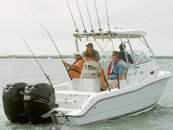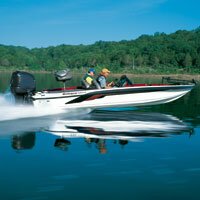Bluefish
Pomatomus saltatrix
AKA: Blues, marine piranha, chopper
Distinguishing Markings:
Blue or greenish blue on the back, sides silvery; mouth large; teeth prominent, sharp, and compressed. The dorsal and anal fins are nearly the same size; scales are small; lateral line is almost straight
Size:
West Coast catches under 3 pounds, up to more than 20 pounds on the East Coast
Distribution:
Bluefish are found throughout the world and are a migratory species that range from Nova Scotia to Florida off the Atlantic coast and can be found in the Gulf of Mexico from Florida to Texas. Along the East Coast, bluefish migrate northward in the spring and summer and southward in the fall and winter. During the summer, bluefish are concentrated from Maine to Cape Hatteras, North Carolina and during the winter, most tend to be offshore and south between Cape Hatteras and Florida.
Habitat:
Young bluefish are usually inshore during the spring and summer, moving offshore to join adults in fall and winter;
Food Preference:
Baitfish, cannibalistic. Bluefish are voracious predators and sight feeders; they will strike at almost any object in the water column. Consequently, they feed on a variety of fish and invertebrates, including butterfish, menhaden, herring, sand lances, silversides, mackerel, anchovies, sardines, weakfish, spotted seatrout, croaker, spot and squid. In Chesapeake Bay and other estuarine habitats, bluefish primarily feed on bay anchovies, white perch, American shad, alewife and blueback herring, and striped bass.
Spawning:
Offshore in spring and summer
Fishing Tips:
Travels in large schools, following schools of baitfish; all members of a given school are about the same size. Catch bluefish by trolling, or casting artificial lures. Cut baits are good for catching bluefish. On the ocean beaches people surf fish for bluefish in the fall. Bluefish have been known to strike at anything and anglers often use wire leaders to prevent the sharp teeth of the bluefish from cutting their lines. Fishing methods include trolling, chumming, casting, jiggling, and live and dead bait fishing from boats, shores or piers. Live baits are best, but plugs, lures or feathers are also used.
If you’re new to saltwater fishing, or a seasoned angler looking for a new fishing boat, see our page on the best boats for saltwater fishing.
See Also:


